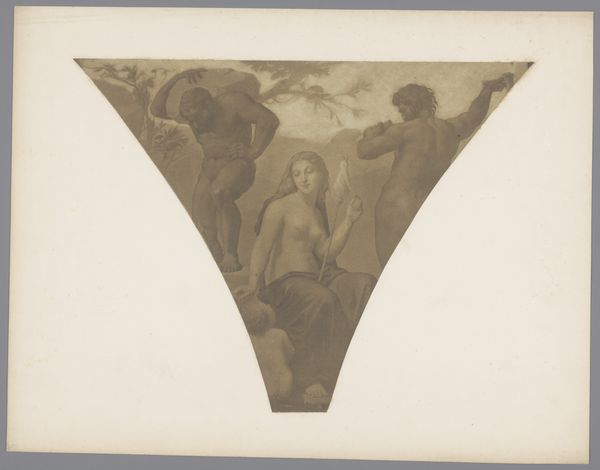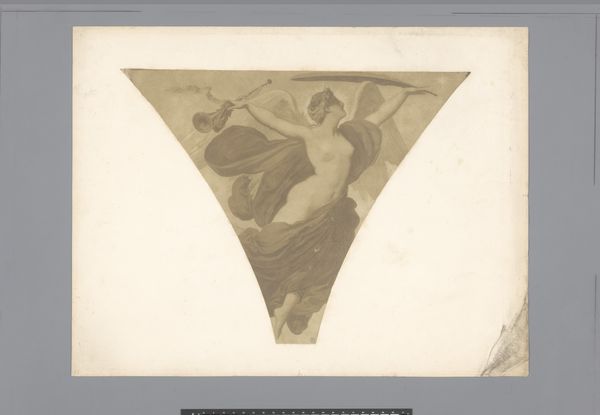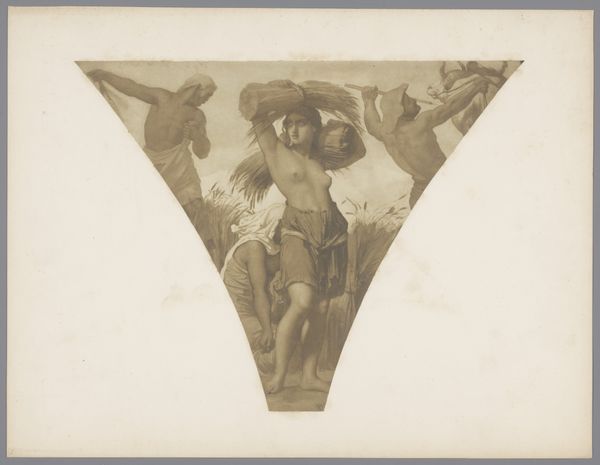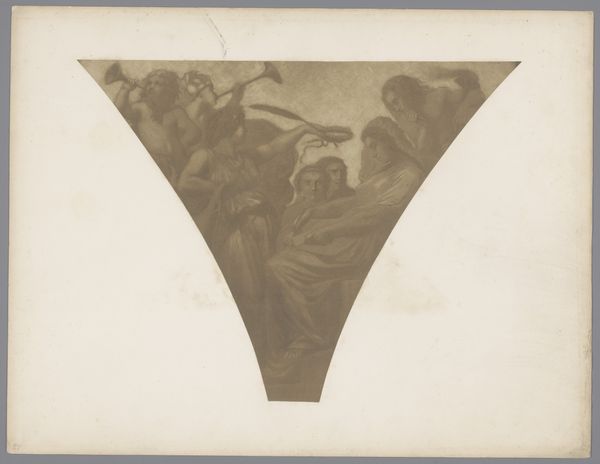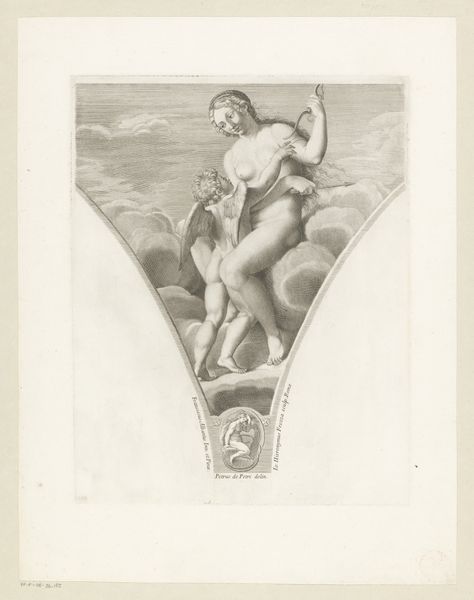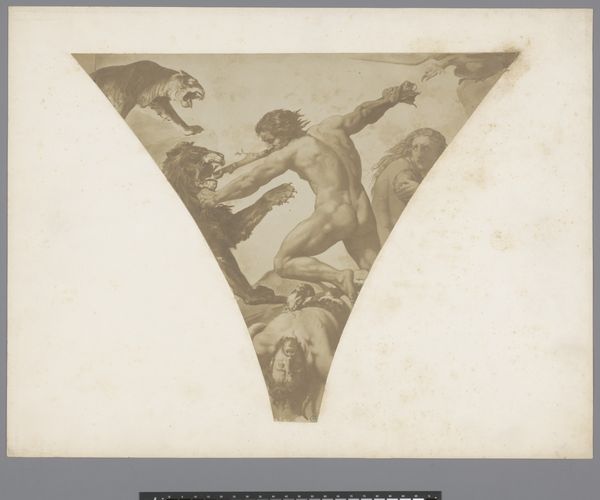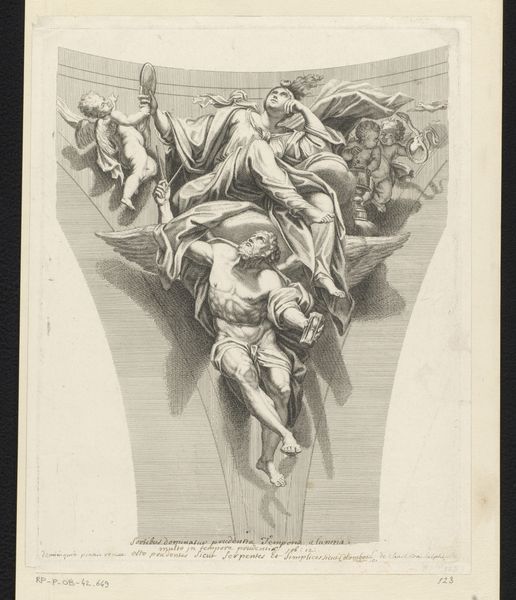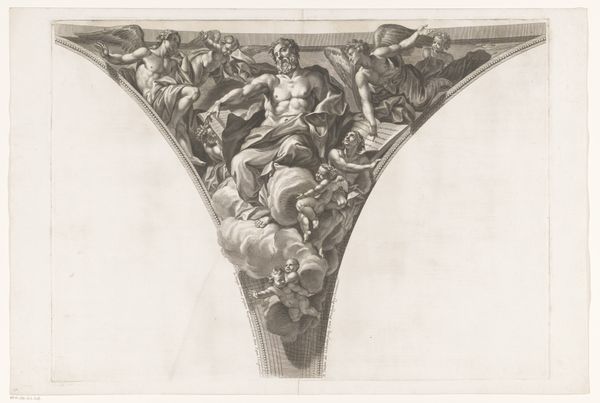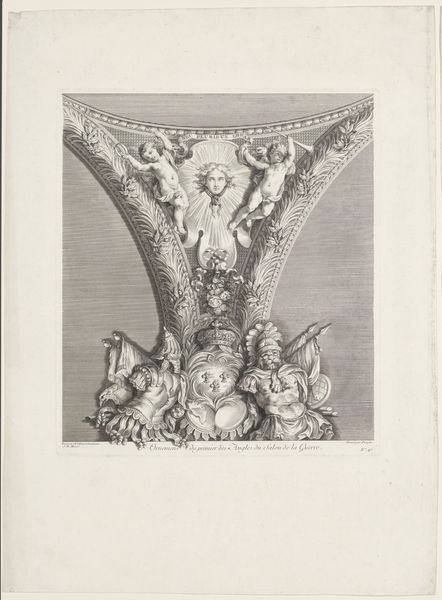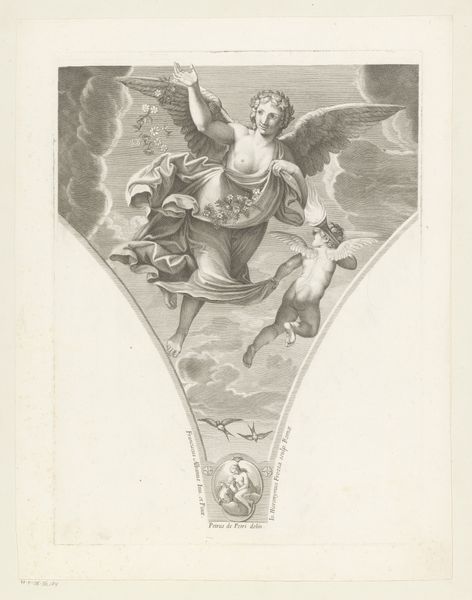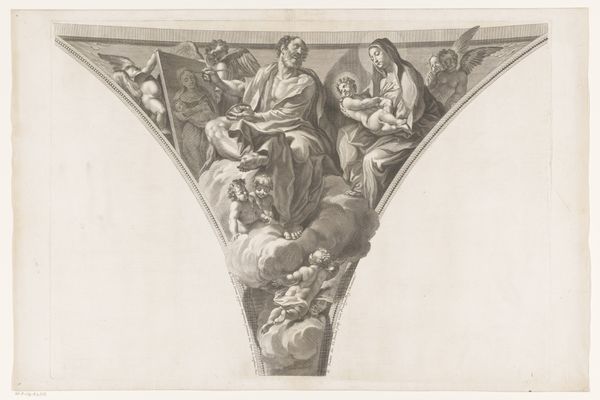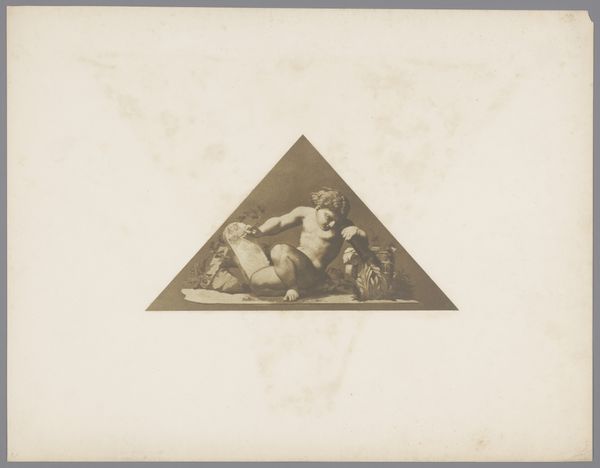
Fotografische reproductie van decoratie aan plafond, Hotel de Ville, Parijs 1852 - 1853
0:00
0:00
print, photography
#
neoclacissism
#
allegory
# print
#
figuration
#
photography
#
cityscape
#
history-painting
Dimensions: height 389 mm, width 502 mm, height , width
Copyright: Rijks Museum: Open Domain
Curator: This photograph by Gustave Le Gray offers us a peek at ceiling decoration from the Hotel de Ville in Paris, taken sometime between 1852 and 1853. The allegorical scene, rendered in print, depicts figures reminiscent of neoclassical painting. Editor: The triangular composition gives the work a real sense of upward movement. The muted sepia tones also create a beautifully soft, almost dreamlike effect. Curator: It’s interesting to note how Le Gray utilized photography not merely for documentation, but also for reproducing artistic schemes within significant civic spaces. These photographs circulated widely, impacting public engagement with art and architecture, and shaping Parisian identity. Editor: The photographic medium allows us to study the precise details, the texture of the drapery, the muscular definition. Was this a widespread practice, photographing building interiors during this period? Curator: Photography did permit new kinds of accessibility, in terms of circulating imagery to mass audiences, yes, though Le Gray also clearly valued his printing process as art in its own right. Editor: How was the image originally made accessible to a wide public? I'm curious about the technical aspects of the printing process involved, and what kind of labor it might have entailed at that time. Curator: This piece acts almost like a historical echo, revealing shifts in societal views on public art and its relationship to nation-building, especially through projects led by institutions of governance such as the Hotel de Ville itself. Editor: So we might say this piece gives insight into how Paris represented its ideals in the mid-19th century. What a fantastic study in Neoclassical figuration and the city's civic identity during that pivotal time! Curator: Indeed, by investigating the social and institutional implications of a work like this, we reveal a wealth of stories concerning cultural history. Editor: I agree, the artistic merit alongside the historical value creates a rich canvas, illuminating much about labor, value, and context in the time the photograph was made.
Comments
No comments
Be the first to comment and join the conversation on the ultimate creative platform.
